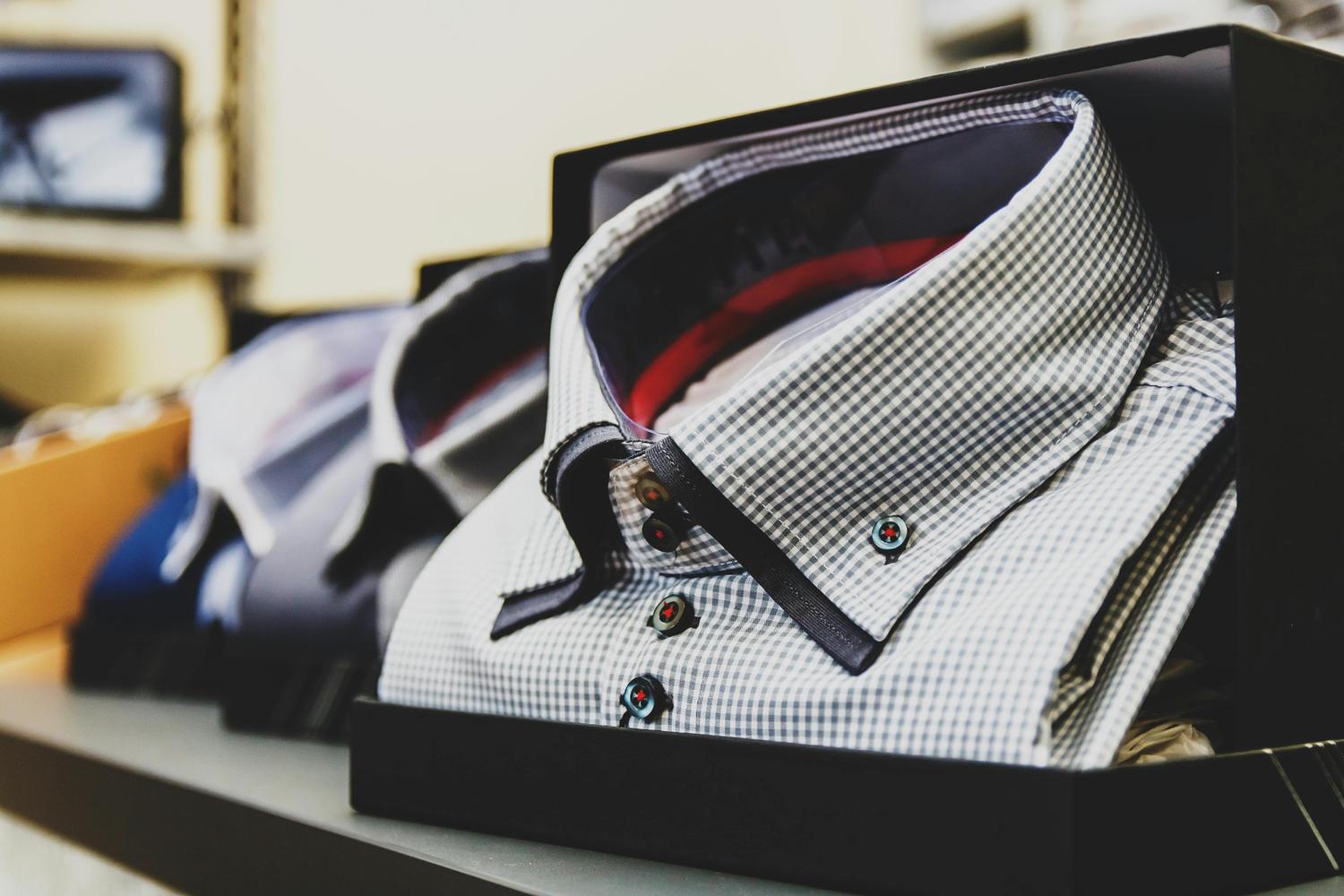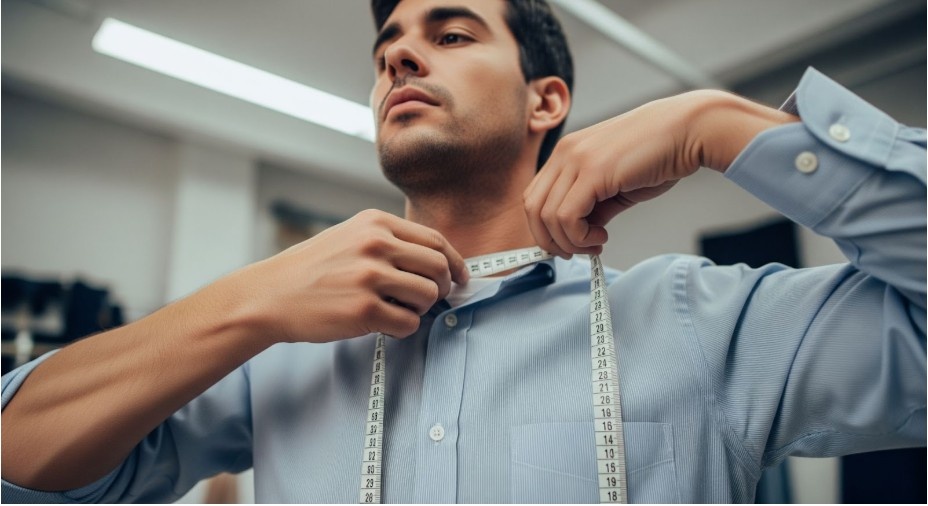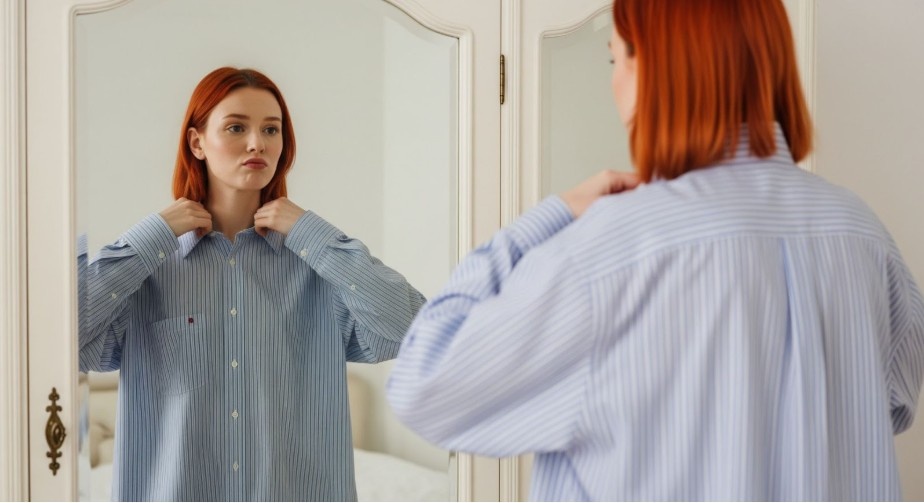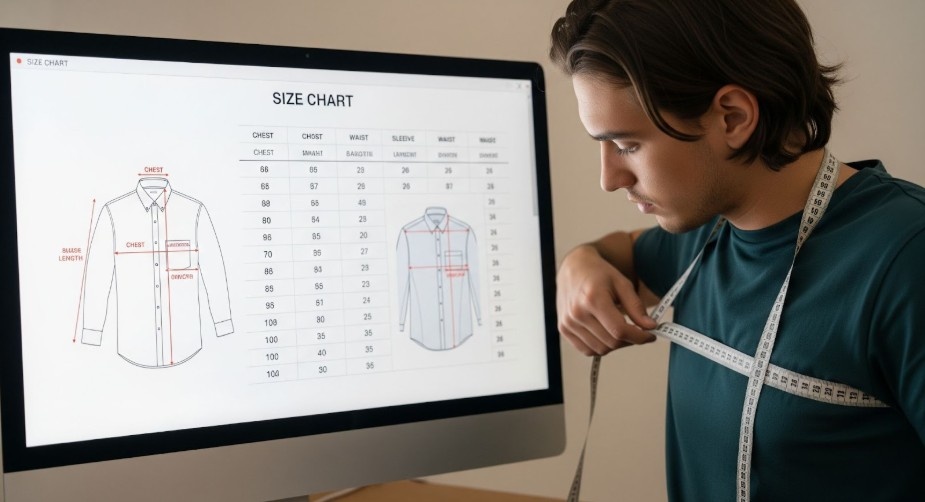
When shopping for shirts, it’s easy to get confused by the different sizing systems used for men and women. As someone who has spent years working with fabric and clothing, I can tell you that the size difference can be more than just numbers.
Whether you’re looking for that perfect oversized look or struggling to fit into a button-up, understanding the nuances of shirt sizing can save you time, money, and frustration.
What’s the Big Deal About Shirt Sizes?
First off, I know that shopping for shirts can be a bit daunting, especially when you’re hopping between different sections or stores. As someone who’s shopped for both men’s and women’s clothing, I’ve found that the differences between men’s and women’s shirt sizes are not just about the fit—they also reflect the different body shapes they’re designed for.
Men’s shirts are often cut more straight and boxy, while women’s shirts typically have a more tailored shape to fit the bust and waist. But there’s more to it than that.
 Image Generated Using Gemini
Image Generated Using Gemini
How Are Men’s Shirt Sizes Measured?
Men’s shirt sizes are typically labeled using a combination of neck size and sleeve length. For example, you might see a size 15/32-33, which refers to a neck measurement of 15 inches and a sleeve length of 32 to 33 inches. While this system is straightforward, it doesn’t account for the shape of the body itself, leaving some room for customization depending on the brand.
What About Women’s Shirt Sizes?
Women’s shirt sizes, on the other hand, are usually categorized using general sizes like small, medium, large, etc., or in specific numerical sizes, such as 0, 2, 4, 6, and so on. This system generally focuses on the bust measurement and body shape. While these numbers might seem easy to understand at first glance, they don’t always translate well across brands, leading to some confusion. Women’s shirts may also offer options like fitted, relaxed, or loose, which directly influences the overall cut of the garment.
The key difference here is that women’s sizing often includes more options for the waist and hip area, allowing for a more form-fitting shirt.
How Do I Know Which Size Fits Me Best?
It all comes down to knowing your body measurements. With men’s shirts, focusing on your neck and sleeve length is key. If you’re shopping for women’s shirts, knowing your bust, waist, and hip measurements will help you find a shirt that fits you best. But what if you fall between sizes? Or maybe you prefer a looser or tighter fit? Here’s a quick rundown on how to choose the best size for your body.
 Image Generated Using Gemini
Image Generated Using Gemini
How to Make the Most of Men’s and Women’s Shirt Sizing
-
Know Your Measurements
The best way to get a shirt that fits you perfectly—regardless of whether it’s men’s or women’s sizing—is to start by knowing your measurements. For men, focus on the neck and sleeve length. For women, it’s all about the bust, waist, and hip. Measure yourself carefully, and then check the size charts for each brand you’re shopping from. Many stores provide guides to help you convert between men’s and women’s sizes.
-
Don’t Rely on the Label
Don’t be discouraged if you find that your usual size doesn’t fit in a particular store or brand. Sizing can vary a lot from one brand to another. The best thing you can do is try the shirt on if possible or check the return policy to ensure that you can exchange or return it if the fit isn’t right.
-
Understand the Fit
The fit of a shirt can vary drastically even within the same size range. For example, you may prefer a “relaxed” fit in a women’s shirt for a looser, more comfortable style, or a “slim” fit for a sleek look. Men’s shirts will often have a choice of “classic,” “athletic,” or “slim” fit, so make sure you understand these options before choosing a size.
 Image Generated Using Gemini
Image Generated Using Gemini
FAQ: What’s the Difference Between Men’s and Women’s Shirts When It Comes to Fit?
Are there really big differences in how men’s and women’s shirts fit?
Yes! Men’s shirts are designed to be more straight-cut and less contoured to the body. Women’s shirts tend to be more fitted in the bust, waist, and hips. This can make a big difference when you try them on. For example, if you’re looking for a looser fit, a men’s shirt might be your go-to, while a women’s shirt might offer more shaping.
Can I wear a men’s shirt if I’m a woman?
Absolutely! Many women love wearing men’s shirts for their relaxed and oversized fit. Whether you’re going for an oversized look or simply need more room, there are no rules against wearing men’s clothing. Just make sure to find a shirt that matches your personal style and fits your body comfortably.
Do women’s shirts shrink more than men’s shirts?
In general, women’s shirts, especially those made from cotton, can shrink more because of their more fitted cut. Men’s shirts typically shrink less, especially if they’re made from a blend of fabrics like polyester and cotton. It’s always a good idea to check the care instructions to ensure your shirt stays in shape after washing.
How can I find a shirt that’s flattering for my body shape?
The key is to find a fit that complements your unique shape. For women, a fitted shirt that accentuates the waist can look flattering, while men’s shirts may benefit from a slightly tapered fit. It’s also important to consider fabric stretch—shirts with some spandex can offer a bit more flexibility.
 Image Generated Using Gemini
Image Generated Using Gemini
Button Up and Carry On
Navigating the world of men’s and women’s shirt sizes may seem like a daunting task, but with the right knowledge and approach, you can find the perfect shirt that fits you just right. Whether you’re looking for a classic button-down, a stylish blouse, or a comfy oversized tee, understanding how each size system works will save you from unnecessary returns and confusion.
As someone who has been experimenting with fashion for years, I can tell you that the key to great clothing is comfort and confidence. So, don’t worry too much about the labels—focus on what makes you feel great and fits your style!
The more you learn about sizing, the more you’ll realize that it’s not just about following the numbers, but rather about finding clothing that complements your shape and personal aesthetic. Happy shopping, and remember: fashion is all about expression—let your shirt be the canvas!



